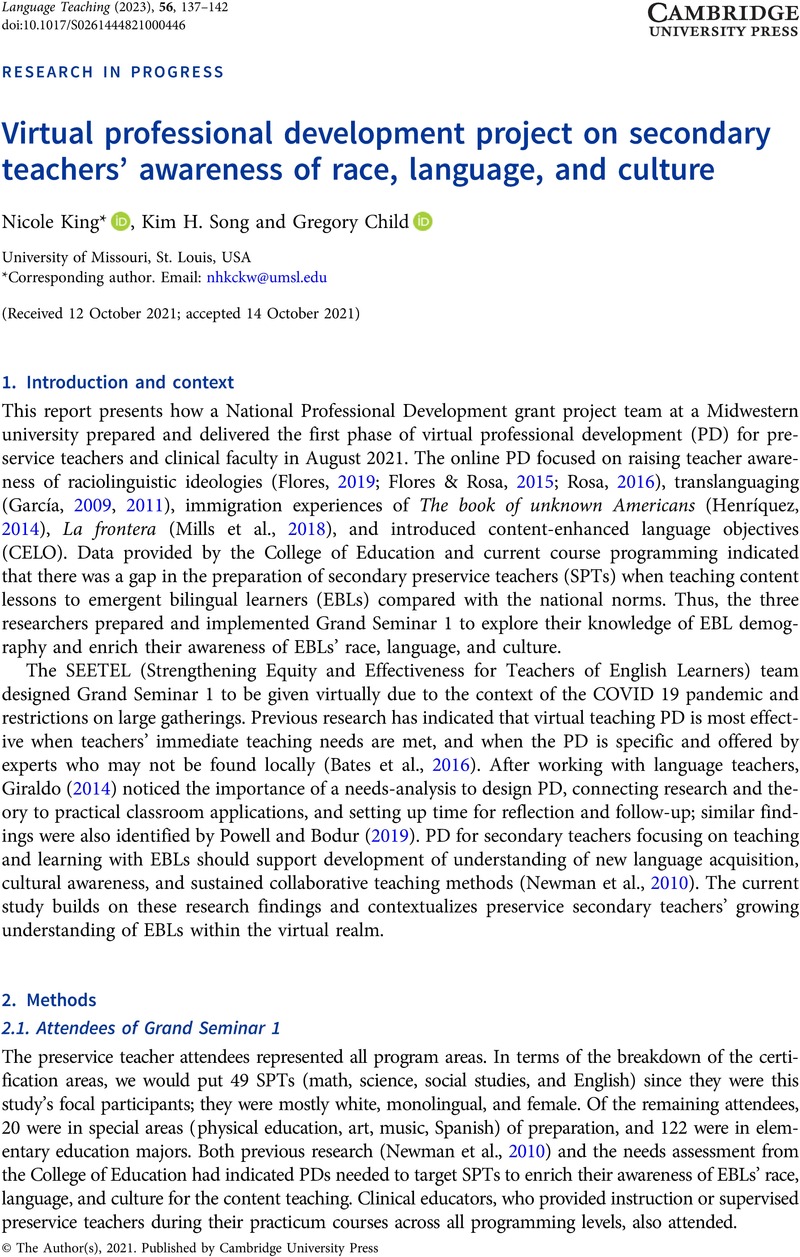Crossref Citations
This article has been cited by the following publications. This list is generated based on data provided by Crossref.
Kamali, Jaber
2024.
A cross-cultural investigation of effective language pedagogy in teachers’ personal practical knowledge narratives: a cultural-ecological perspective.
Pedagogy, Culture & Society,
p.
1.
King, Nicole
Song, Kim
and
Child, Greg
2024.
Enriching preservice teachers' translanguaging stance and practices toward emergent bilingual learners through virtual professional development.
TESOL Journal,
Vol. 15,
Issue. 1,




